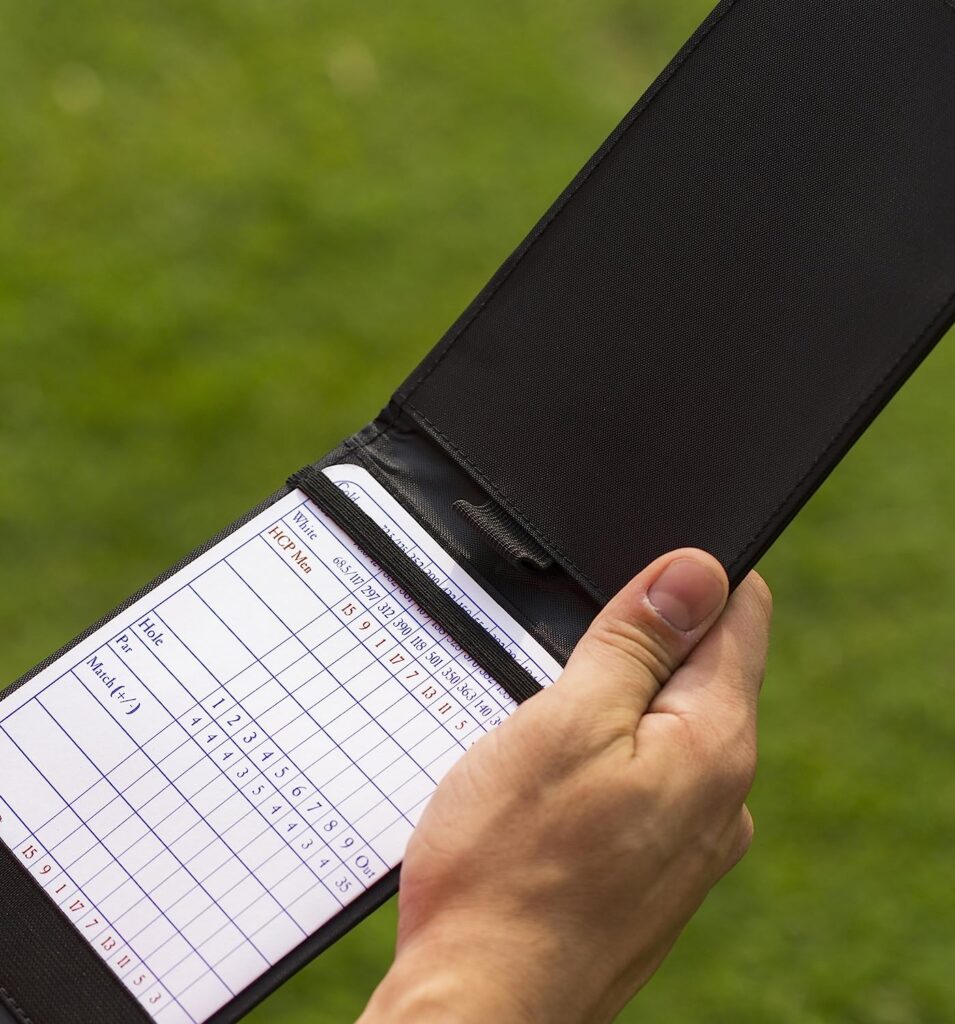Have you ever stepped onto a golf course, eagerly anticipating a round of exhilarating swings and unpredictable putts, only to become overwhelmed by the idea of your handicap? If so, you’re not alone. Understanding what constitutes a good handicap in golf is a mystery that many players strive to unravel.
It doesn’t matter if you’re an experienced player trying to figure out your handicap or a beginner wanting to learn how the game works. This blog post will help you get a good handicap.
People have been drawn to golf, which is often called the “gentleman’s game,” for hundreds of years because it requires elegance, precision, and strategic thought. But there is a complicated method in this sport that determines a player’s handicap, which is a number that shows how good they are.
In the 18th century, Scottish golfers came up with the idea of grading as a way to make the playing field level for players of different skill levels. Today, handicaps are an important part of the game because they make sure that all players can fight fairly, even if they are not as good as each other. But what does a good golf score really mean?
I’m afraid I don’t know the answer to that question. A good handicap is subjective and can change based on things like the player’s experience, how hard the game is, and even their own personal goals. Understanding the basics of the handicap system and how it affects your game, on the other hand, can help you improve as a player.
This blog post will explain the ins and outs of handicapping, talk about what makes a good handicap, and give you advice on how to improve your game while you work toward that coveted “good” position. If you want to learn more about what it means to have a good handicap in golf and how to figure it out, grab your favorite golf club and read this blog post.

The History and Purpose of Golf Handicapping
The history of golf scoring goes all the way back to Scotland in the 18th century. A group of Scottish golfers came up with a way to make sure that players of all skill levels could fight on an even playing field. In the end, this method turned into what we now call golf handicapping.
The goal of golf handicapping is to make it fair for players of different skill levels to fight against each other. The game is more fair because it takes into account things like how hard the course is and how skilled each player is. Handicapping lets golfers of different skill levels play together in a way that is both fun and difficult by giving each player a number that represents their skill level.
How the Handicap System Works
When it comes to golf, the handicap method is based on the idea that every player has a normal score that they can reach on any given day. This number is called their “handicap index.” The player’s potential skill level is shown by their handicap index, which is used to figure out their course handicap for a certain track.
There are several things that go into figuring out a golfer’s course handicap, such as the player’s handicap index and the course’s difficulty grade. A player’s course handicap will go down as the difficulty level of the course goes up. If a golfer has a low handicap index, on the other hand, their course handicap will be bigger.
Factors Affecting a Good Handicap

Player Experience
Experience as a golfer is one of the most important things that can change what is thought to be a good score. Most of the time, a golfer with more experience will have a smaller handicap than someone who is just starting out. This is because more practice makes you better at the game, understand it better, and be more consistent.

Course Difficulty
When deciding what a good handicap is, the difficulty of the game being played is also very important. A player who does well on difficult courses may have a lower handicap than someone who plays on easier courses most of the time. This is because you need more skill and accuracy to get a good score when the game is harder.
Personal Goals
What a player thinks is a good handicap can also depend on their own personal goals. While some players may be happy with a certain handicap level that lets them compete easily with their peers, others may have higher goals and strive for a lower handicap. Finally, what makes a good handicap will be different for each person depending on their own goals and plans.
What Is Considered a Good Handicap?
What is a good handicap in golf is subjective and can change based on a number of things, as we already said. On the other hand, there are some general rules that can help you figure out how good you are at golf.
Most of the time, players with handicaps between 10 and 20 are thought to be of average skill. These players have good fundamentals and can regularly make baskets in this range. Handicaps below 10 are usually given to more experienced players who are very good at their game and always get it right.
Keep in mind that handicaps are not permanent and can change as your skills get better or worse. So, instead of comparing yourself to others based only on your disability, it’s always better to work on your own growth.
Improving Your Game to Achieve a Good Handicap
Practice, Practice,Practice
Hard work and practice are two of the best ways to get better at golf and get a good score. You can improve your skills and become a better player by going to the driving range, working on your short game, and focusing on areas where you’re poor.
Seek Professional Coaching
Getting help from an expert golf coach can help you learn new things and get better at the game. A coach can help you figure out what you need to work on, give you personalized lessons, and give you ways to improve your general performance.
Focus on Specific Areas of Improvement
Finding the weak spots in your game and working on getting better at them can make a big difference in your handicap. Spending time and effort on these areas will help you do better overall, whether you’re trying to get better at putting or making your swing more steady.
Setting Realistic Goals for Your Handicap
It’s important to be realistic when making goals for your disability and think about things like the time it will take, your skill level, and your personal situation. Setting goals that you can reach based on your current skills will keep you motivated and give you a sense of success as you work to get better with your disability.
The Importance of Tracking and Monitoring Your Handicap
Keeping track of and tracking your handicap is important for seeing how you’re doing and figuring out what you need to work on. Keep track of your numbers over time to learn important things about how you play the game. This information helps you focus on the things that need your attention and keeps you motivated as your disability gets better.
Conclusion: Unlocking the Secrets of a Good Handicap in Golf
Overall, figuring out what a good golf handicap is rests on a lot of things, like the player’s experience, the difficulty of the course, and their own personal goals. There are some general rules about what makes a good excuse, but it’s more important to work on yourself and not stay focused on how you compare to others.
You can work on getting a good handicap by practicing often, getting professional help, and having goals that are attainable. Keep an eye on your progress along the way to keep yourself encouraged and figure out what needs more work.
Finding out how to get a good score in golf takes hard work, persistence, and a love for the game. Go ahead and grab your clubs. Hit the greens, and enjoy the process of becoming the best golfer you can be!
